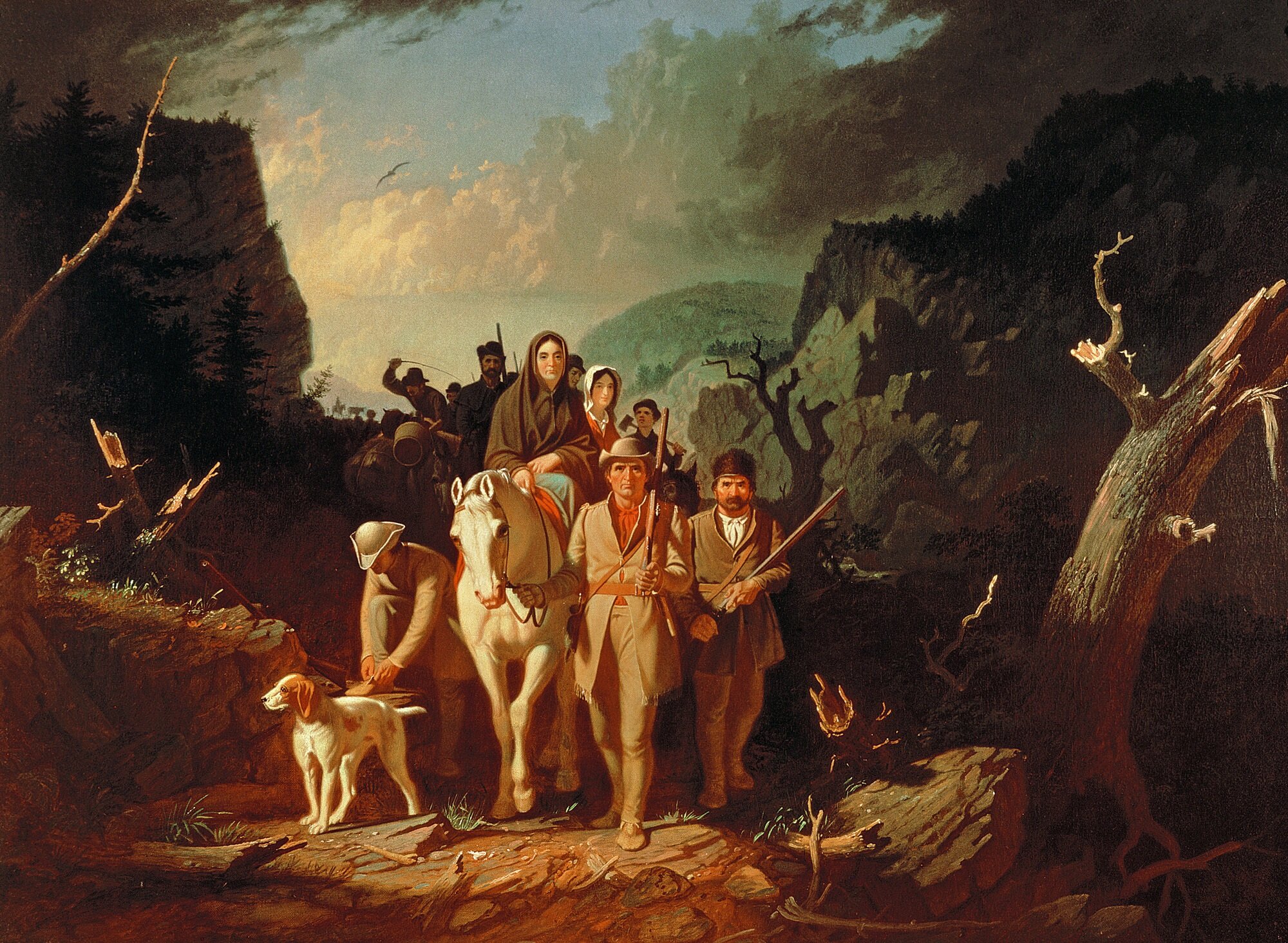Reaching Out Toward Risk and Glory
Daniel Boone Escorting Settlers through the Cumberland Gap, an 1851 oil painting by George Caleb Bingham. Bingham’s art was especially influential in crafting and spreading popular myths about American national identity in the era of westward expansion.
Daniel Boone was a “long hunter.”
Every Fall, he’d leave his home and family in North Carolina and roam the woods for 2 or 3 months to collect buckskins and beaver pelts, and he was good at it.
Daniel’s reputation as a tracker, hunter, and trapper spread, and a few wealthy landowners asked him for help.
They wanted more land, and the Appalachian mountains were a problem. The mountains stood in the way of beautiful rolling meadows and fertile soil in central Kentucky.
Daniel had no formal education, but no one knew the woods better. They asked Daniel to find a way to Kentucky. A passable gap in the mountains.
It was a dangerous ask.
No American settler knew what was beyond the mountains. Maybe beasts. Impassable terrain. American Indians.
Daniel was in his mid-30s, with a wife, Rebecca, and five children. Taking the job meant leaving them behind for a year. Maybe two. Maybe forever.
It wasn’t even a sure bet that a pass existed. But with Rebecca’s blessing, Daniel said yes.
And he did it.
Daniel found The Cumberland Gap, a pass in the Appalachian mountains where hundreds of thousands of settlers would eventually travel to move Westward.
Daniel went on to live a life filled with more adventure. But the decision that made him an icon was saying yes to a long-shot job that required courage and sacrifice.
And finding the Cumberland Gap.
"In his mid-thirties a man either reaches out towards risk and glory or stays within the routines of the expected and ordinary. It is the age when men leave safe homes and jobs and go on voyages and odysseys and perform transforming sacrifices. It’s the age when Walt Whitman wrote ‘Leaves of Grass’ and Columbus started planning his voyage to the Indies. It’s an age at which visionaries become prophets, or explorers, or inventors, or make fools of themselves trying."
- Boone: A Biography, by Robert Morgan, 2007
There’s nothing wrong with staying within the routines of the expected and ordinary. When we reach out toward risk and glory, we may make fools of ourselves. We should feel confident the potential glory is worth the risk.
Sometimes, it is.
Where we are now is based on the decisions we made 5-10 years ago.
Where we’ll be in 5-10 years is based on the decisions we make now.
Expected and ordinary can be noble. But reaching out toward risk and glory is the only way to find The Cumberland Gap.
